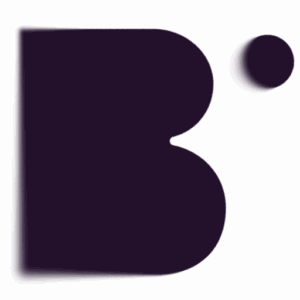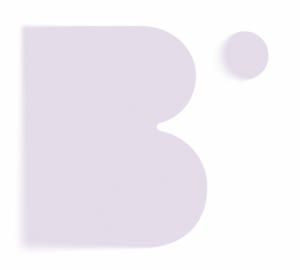Different Personalities: A Strength for Creativity
Whether you need to find new creative ideas and solutions to make a project move forward, or you’re working on your next project, or even if you have an innovation team to manage, I’m sure you’ve noticed that creativity tools are usually not the issue. Coming to terms with the human element is way harder.
So, when you have enthusiastic members that respect and push each other, all may go for the best, but as soon as buzz killers come into play, they threaten to ruin your fun, innovative game. At least, this is what I was saying a few years back when I was working alone, as an artist.
I’ve learned with first-hand experiences that buzz killers often hide something that is not only interesting but necessary for any innovative project. But the condition to engage them in your project, is to do it at the right time. Indeed, different persons should intervene at different moments of the creative process. Let’s look into it:
THE CREATIVE PROCESS
There are lots of ways to describe the creative process (in the sense of the ideation process) but the phases are pretty much the same in every theory. I really like Roger Von Oech’s model that he describes in his book “A Whack on the Side of the Head” very concrete and easy to understand. It goes like this:
EXPLORER 🧭
ARTIST 🎨
JUDGE 🧑⚖️
WARRIOR ⚔️
This means that, at first, you have to start exploring as much as possible (explorer), then you improve and develop your ideas, refine them (artist). When that is done, you can finally judge your ideas: which idea seems to be the most efficient, which one should you maybe leave on the side and so on.
Finally, you have to fight to implement them…and that requires perseverance, courage, and mental flexibility to be able to change ideas with iteration. Of course, it isn’t a straight line but a simplified compass to help you follow your north star.
From that perspective, I imagine you can picture how certain people would fit better at different phases of the process.
boost YOUR CREATIVITY OUR NEWSLETTER
Just fill up your details and get access to exclusive creative recommendation from Butzi!
WHO DO YOU NEED AT THE BEGINNING?
At the beginning of a project, you need dreamers. You need people that have this childlike ingenuity with an “anything is possible” kind of energy. Leave the analytical people on the side for the moment. Strategically, this is the best solution, but I understand that it isn’t always easy to spot the “wrong” people and to tell them. But hey, who said being a good observer and manager for innovative projects was easy?!
The Project manager
In any project, creative or not, it is better if someone oversees the whole mess. With human interactions, it can get pretty chaotic and you need one or several conductors.
This person believes in the project and/or in the motivation behind the idea.
If the initiative is to modernize your company, he should be able to “phoenix” the hell out of the initiative when the first 5 ideas fail, and it seems lost.
An important quality for the project manager is to let his ego on the side when people have better ideas than him. Seems trivial? Well, I’ve always considered myself having a deflated ego, but when you are always thinking of the project, it is hard not to be a control freak and to trust others.
The Super enthusiastic
These are the people who believe in the original initiative, and frankly in any new project launched by the company or by the project manager. They do so for various reasons: to invest themselves in the company, to change a particular aspect, to grow, or just because they really like the idea.
They are great because they’ll engage at each step of the project, giving you and others energy to go forward always looking for different solutions to various obstacles.
Beware: they might hide certain traits that can come as a surprise to you if you aren’t careful, like being only enthusiastic, not having practical solutions, or wanting to work only with people who have a similar personality.
The weirdo / the original
I wrote a book called “Crazytivity”, so no judgment here… and yes, I will defend this personality’s case. This person might appear like a weirdo. He brings to work a lunch you have never seen before. He might be trained in rare and mysterious martial arts like Viet vo Dao ( Yes, I’ve done my research). Whatever.
I prefer to call them “originals” because I identify to this type of personality. In creativity, they can be really useful because their brain works differently. They don’t have the same frame of reference, filters, and behaviors, and that can be an awesome addition to the team.
The Shy fox
This person doesn’t say much but might be full of resources. It is everyone’s job in the team (not only the project manager) to ask them questions and regularly engage with them.
I’ve seen it a thousand times in my creativity workshops: on 5 people, this person is sitting in a corner (or so it seems given their posture), and one or two enthusiastic throw ideas everywhere, completely ignoring this person.
So I added a rule: equal time of speech. Everyone must ask others their opinion, even and especially if they don’t say much (told you it was more about the human element…). And when they do, surprise surprise (!), the shy fox says something that makes everyone pause and rethinks their direction ( they were growing an interesting thought in their mind for the last ten minutes).
WHO YOU NEED WHEN IT IS TIME TO JUDGE IDEAS AND BULLETPROOF THEM?
Now, that being said. Let’s talk about people you think AREN’T the right ones for innovative projects. Those who might kill the positive energy.
The “realist”
If you know a party pooper colleague who often shoots down your ideas saying, “I’m just being realistic”, you should not involve him in your project at first. It is my firm belief that we need a certain childlike candor when starting a project and this personality type thinks more about negative consequences than positive possibilities.
But why not give them a call later in the process and ask what they think about the project? When you have something to show and that you are mentally prepared to receive feedback, the realist can be of great value for your project, finding things that could have failed or been a problem when launching your project publicly.
The nitpicker
Horrible person. Who likes someone who kills the mood with a “Yes… but” with a couple of picky details on how your idea could fail? Horrible…for the first phase! But perfect for the JUDGE part!
You are hesitating between a couple of good ideas and you wonder which one has more flaws? Invite the nitpicker and put the spotlight on him (also to make it up to him because he wasn’t invited at the initial brainstorming sessions).
If you recognize this person’s intelligence behind his cynical attitude, keep him on the team. Such an analytic eye can save you money, time, and help you avoid making big mistakes!
ARe YOU LOOKING FOR A KEYNOTE SPEAKER OR A COACH?
Experienced people
They’ve seen many things and might be annoying if they act all “been there, done that”, but you have to suck it up because even though they seem like they “don’t have it” (talking about that bold and naïve energy) they WILL give you gems of knowledge and warnings you might not be able to see.
Again, you don’t want people showing you what can go wrong when you have barely started or when you are just throwing stupid ideas to open up the conversation. A wise move would be to go back to the creative process and wonder at what time you can ask experienced people’s help. To pick the right ideas? To help you implement the idea you chose?
Each person has a different lens on
I could go on and on about archetypes and personalities of course, but you get my point. The last thing I want to underline is that each team member’s point of view is precious.
The best collaborative and creative team efforts happen when each person brings something different to the table. The diversity of perspectives will help your team attack the problem from many different angles.
We all look at life with a different lens, whether it is magic, marketing, finance, opportunities, parenting, or even chess (why not?). Having different people looking at the same problem or project through different lenses is key to attaining a multidimensional creative perspective and reaching innovation. It will help you tackle a project from beginning to end with analytical, empathic, and creative eyes.
Embrace diversity
When we hired new blood for our start-up, my partner and I were on the same page: we needed women to even the gender balance in the company. It was just one of our items on the list, but we knew we needed more female energy around us at work.
The question is: does your team have enough diversity and what are you looking for? Whether it is gender, ethnic diversity, different backgrounds, and personalities, diversifying will bring contrast and a variety of skills to your project and assure its success!




